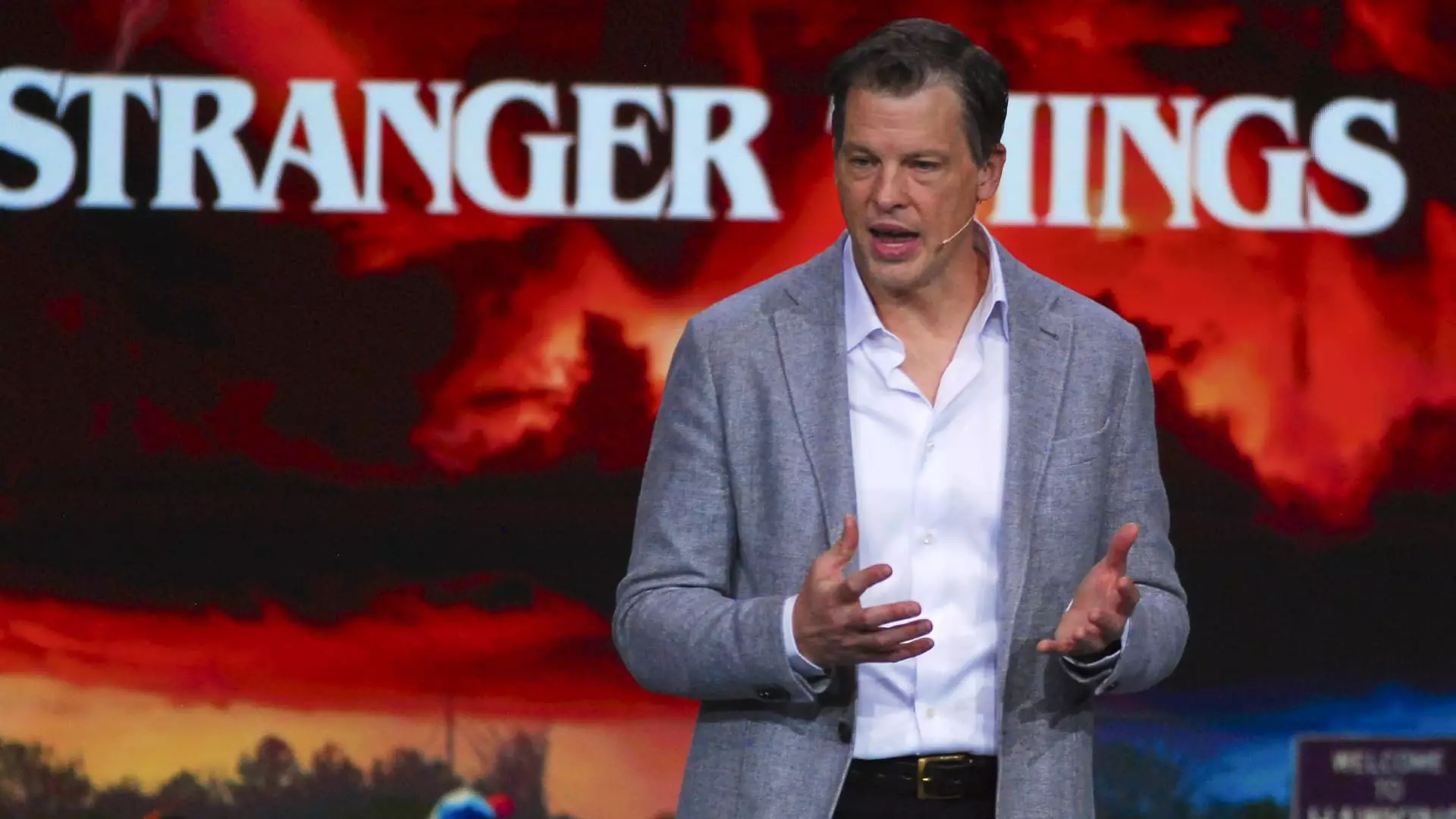In a recent communication, Netflix executives maintained a facade of optimism, declaring that the company is operating smoothly amidst economic headwinds. Their first quarter results displayed impressive operating margins of 31.7%, surpassing analyst expectations by a substantial margin. But do not be fooled by the upbeat statements. Underneath the surface of these rosy numbers lies an uncertain landscape that paints a more intricate picture of Netflix’s current standing in the market.
The forecast for the upcoming quarter also highlights a promising quarter ahead, with a projected margin of 33.3%, suggesting that Netflix could still capture significant value in a struggling economy. Yet, the lack of an upward revision in long-term projections indicates a cautious approach that seems out of sync with the bold proclamations coming from the executive suite.
Workplace of Unsure Futures
There’s a troubling contradiction at play. On one hand, Netflix boasts about being ahead of its own guidance, but on the other, it holds back on making optimistic long-term adjustments. This indicates that perhaps the streaming giant is bracing itself for a rocky second half of 2023. Economic indicators are not favoring consumer sentiment, and as we peel back the layers, we find a company that might be merely weathering the storm rather than thriving within it.
Co-CEO Greg Peters acknowledged Netflix’s historical resilience during downturns. But can that spirit sustain the company against ongoing economic turbulence? A cheaper entertainment option is no small factor as consumers tighten their budgets. Yet, could Netflix’s $7.99 monthly subscription with ads ultimately become a tipping point where value-consciously frugal consumers contemplate their subscriptions?
The Question of Subscriber Loyalty
One glaring issue is Netflix’s recent decision to cease reporting on subscriber numbers. This raises alarms about subscriber retention and churn—topics that are vital when assessing Netflix’s long-term viability. While Peters articulates a confident stance regarding retention rates, the absence of hard data leaves a nagging uncertainty in the minds of investors and consumers alike.
Moreover, the financial reality is that the first-quarter revenue of $10.5 billion aligned with expectations, and the guidance for $11 billion in the second quarter looks promising too. But the sole focus on these figures neglects the ecosystem surrounding them. With inflation reaching heightened levels, the potential for consumer confinement grows. How many more monthly subscriptions can the average American afford before Netflix finds itself at the bottom of the priority list?
While Netflix’s optimistic rhetoric uplifts spirits, the underlying metrics are murkier. The messaging indicates stability only if one chooses to ignore the greater economic context. As we navigate through 2023, how this streaming behemoth adapts and responds to real customer sentiments will ultimately determine whether its “well-being” is sustainable or merely a façade waiting for the inevitable economic dip. Where will Netflix be when the murmurs of financial strain invariably evolve into escalating skepticism? The clock is ticking.

